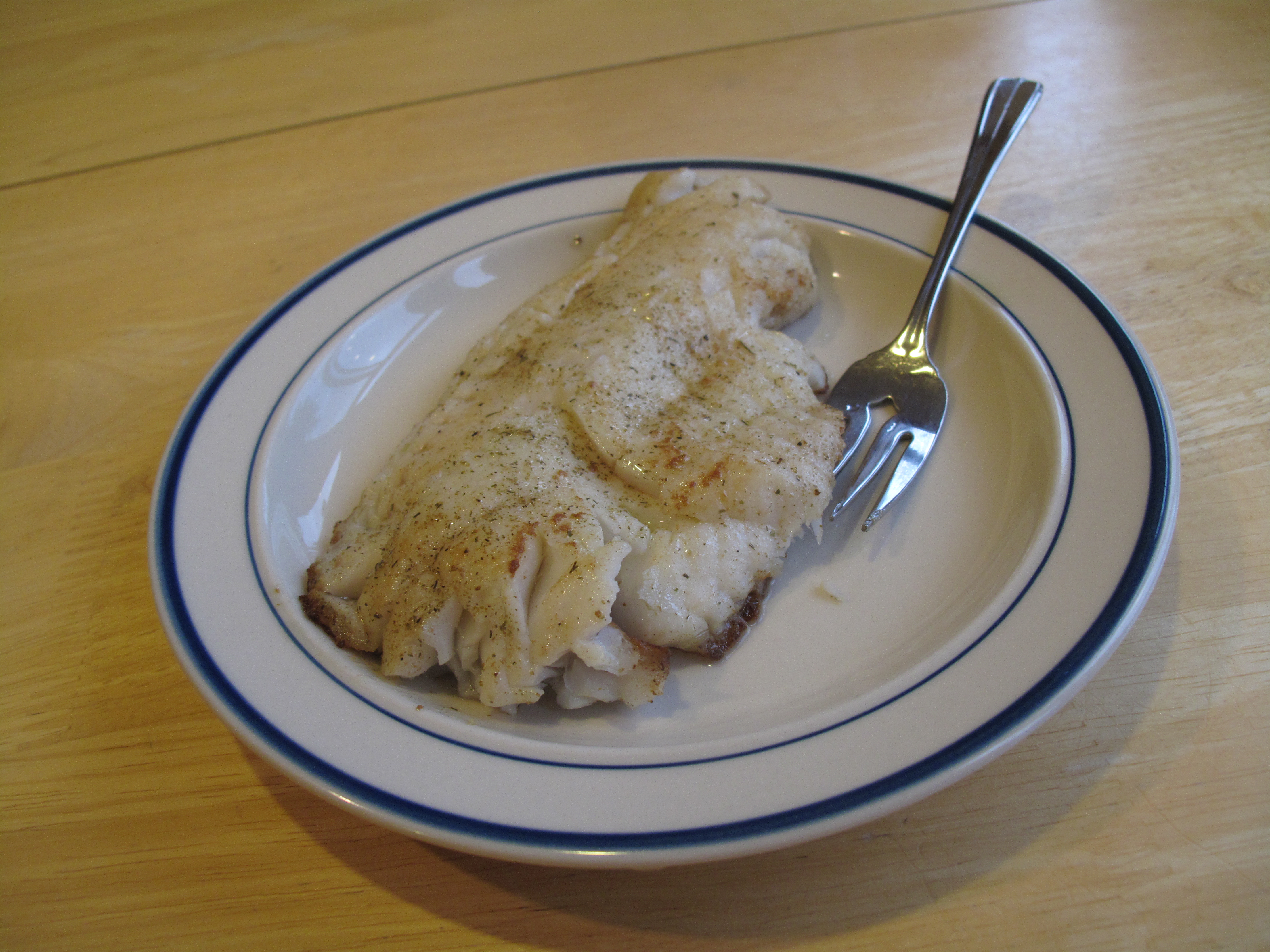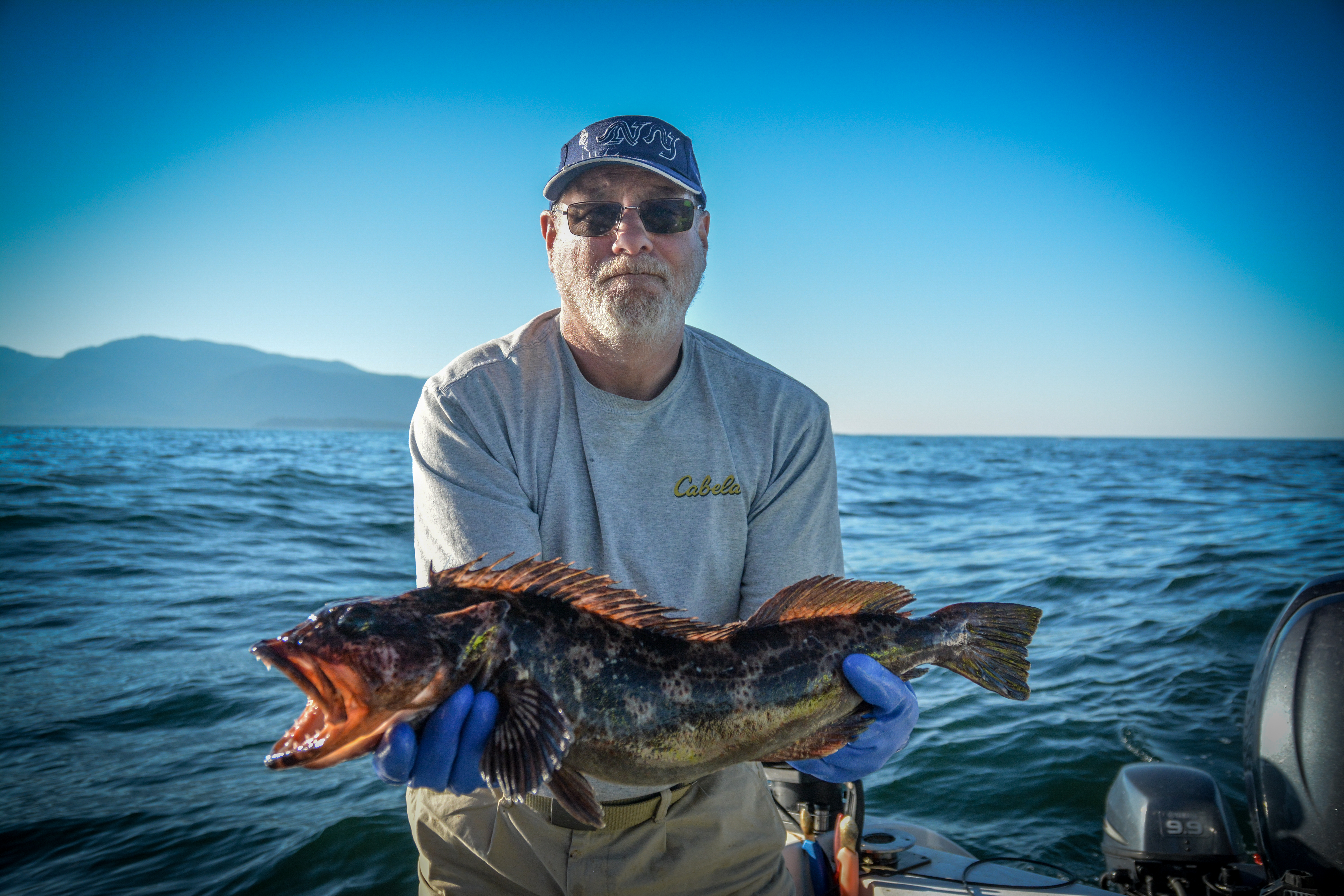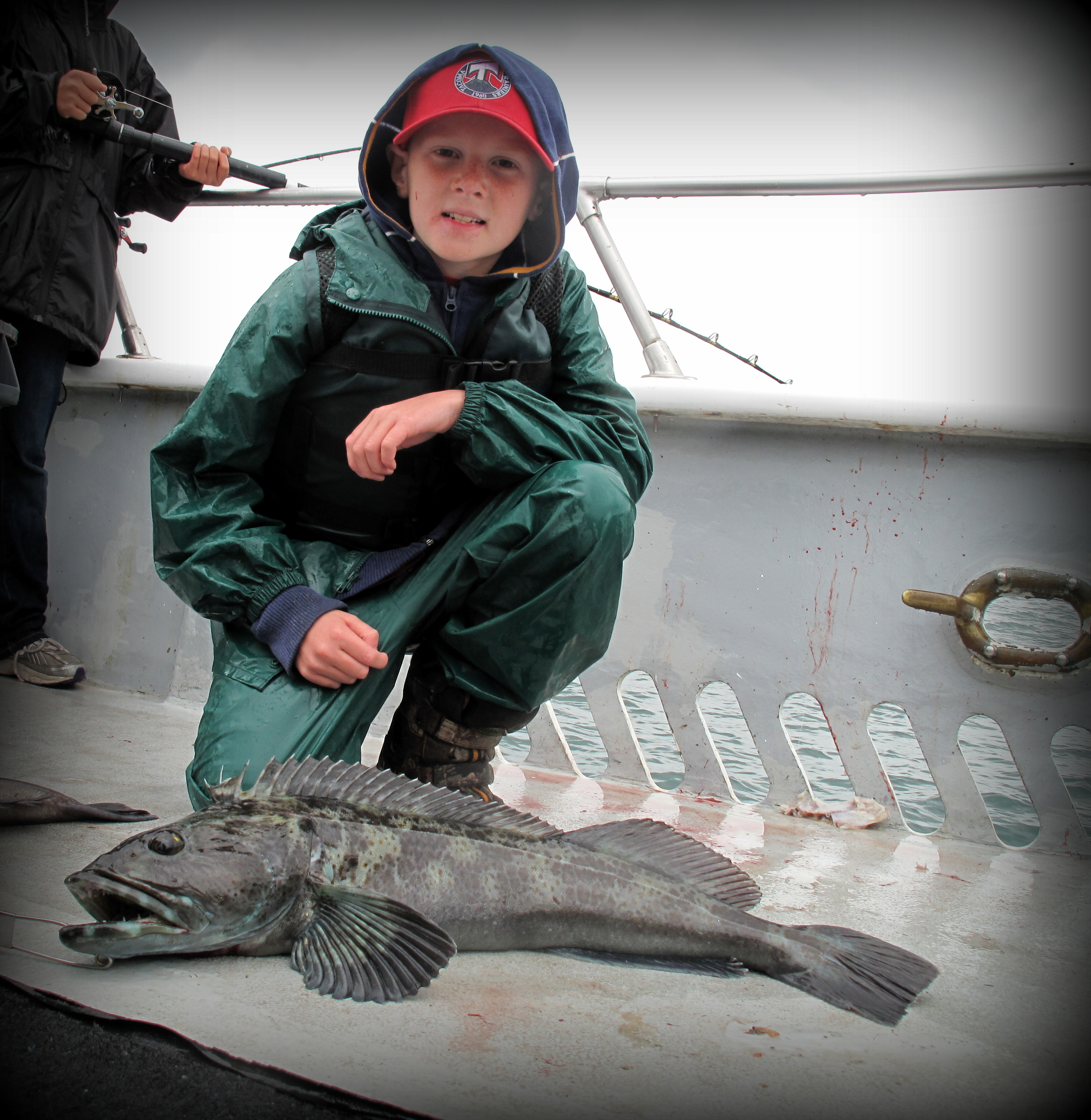Search
Latest Articles
Washington's Lingcod
by Jason Brooks, May 07, 2018
The day usually starts out heading to a shallow flat or cove where you can catch some bait for the day. Depending on what marine area you are in you are allowed up to 15 bottomfish per day, with the one lingcod being part of that limit. Live bait is preferred so use the rest of your limit to target some bait for the day. A lightweight trout rod spooled with ten-pound Izorline XXX on the spinning reel is all you need to have a fun time catching small flounder, greenlings, sculpins and other bottom fish.
¼ or 1/8-ounce Maxi-Jigs tipped with a piece of worm is the preferred bait, but small plastic grubs on a jig also work. Cast out and wait until the jig hits the bottom and then retrieve it back by twitching it. The idea is to bounce it along the bottom back until it reaches the boat. You can also just drop it straight down and jig it but the light weight jigs don’t fall very fast and you can spend more time trying to drop it down than actually fishing. You need to use the small jigs because your bait for the day has a small mouth.
Live herring is another bait that you can find at some bait shops in case you don’t have time to catch your bait. Frozen herring rigged whole or plug cut is a last resort but does catch lingcod. Other options are to use small pipe jigs as well as a 2-ounce jig head with a Powerbait grub. Use Pro-Cure’s Super Gels in Herring, Butt Juice, Flounder Pounder or Sardine on the jig to attract the lingcod out of the crevices and hiding holes.
After catching your bait it’s time to head to the lingcod grounds. Lingcod offers a fun fishery that is not very technical but can be frustrating while jigging along the rocks and jetty’s. A basic sonar unit definitely helps locate structure such as the sunken Tacoma Narrows bridge near Titlow Park. And if you choose to fish the jetty’s in the Edmonds, Everett and Seattle areas then finding the far ends might get you a ling that someone else hasn’t picked over or a diver hasn’t found yet.
One of the most popular lingcod fishing grounds is along the eastern shore of the Narrows near the Narrow bridges of Tacoma. Those that fish the South Sound can also head over to Toliva Shoal near Fox Island to fish the rocky bottom that juts out from the deep water of Puget Sound. Other options are to fish near Pt. Evans and the rocky shoreline south of Gig Harbor.
But don’t overlook any shoreline that has a rocky bottom. Other places to try are points that stick out into Puget Sound such as Point No Point, Alki Point, Dalco, and off the end of the jetty’s at the various harbors and marinas around Puget Sound. The San Juan’s also offer some good lingcod fishing, as well as the shores near Sekiu but be sure to check the regulations.
Switch out the rods to ones that are seven to nine feet with a strong backbone and fast action tip. This allows you to feel the bait fish as it swims and still set the hook and haul in the lingcod. A 1 to 2-ounce banana mooching weight and a mooching leader with tandem Gamakatsu hooks is all you need. I prefer to put the hooks through the tail of the bait. This allows the fish to swim around and give a natural presentation as it tries to swim away from any lurking lingcod. The fast action tip really tells you if you are about to get bit as the baitfish will act up once the lingcod approaches.
One thing to remember about lingcod is that they often bite and hold onto the bait and your hooks don’t penetrate their bony mouth. Instead the predator fish just hangs on. Be sure not to pull the lingcod to the surface without someone ready on the net. If you break the surface of the water and the lingcod isn’t hooked but just holding onto the bait, then it will let go and you will miss your chance at landing the fish.
Lingcod cut well, with their white flesh and big fillets. Even a slot limit fish provides plenty of meat for a dinner of fried fish.
Keep in mind you cannot keep any seabass or rockfish you might incidentally catch and be sure to release them with a descender device. Such a device is now required to be onboard your boat even if you don’t have the need to use it. Measure your lingcod and make sure to only keep those within the slot limits. This fishery is fairly fragile as the cod take a while to reach maturity and if you catch an obvious oversized fish try and release it in the water or if caught in deep waters then be sure to use the descender. You cannot fish deeper than 120 feet in Puget Sound for lingcod and Marine Area 12 is closed, be sure to review the regulations for all of the details. Most lingcod this time of year are making their way to shallow waters with a rocky bottom for the spawn so there is no need to fish deeper than 100 feet.
Give this great fishery a try while you wait for the summer salmon and steelhead to arrive. You might find it to be just as fun. Remember your bait catching grounds that you started the day on, as this is another great fishery when taking friends and younger anglers out on Puget Sound when the salmon fishing gets boring later this summer. I often put out the crab pots and then go fish for flounder to pass the time, but that is for another article later this summer.
--------------------------------------------------------------------------------------------------------------------------------------------------------------------------------
Jason Brooks hails from North-Central Washington. The son of a fishing guide, Jason is an avid hunter, angler, outdoor photographer and published writer. He resides in Puyallup with his wife and two boys.



